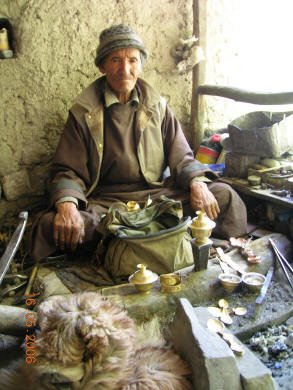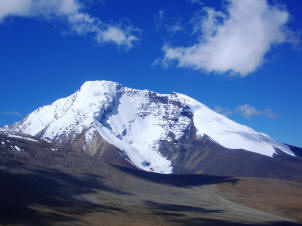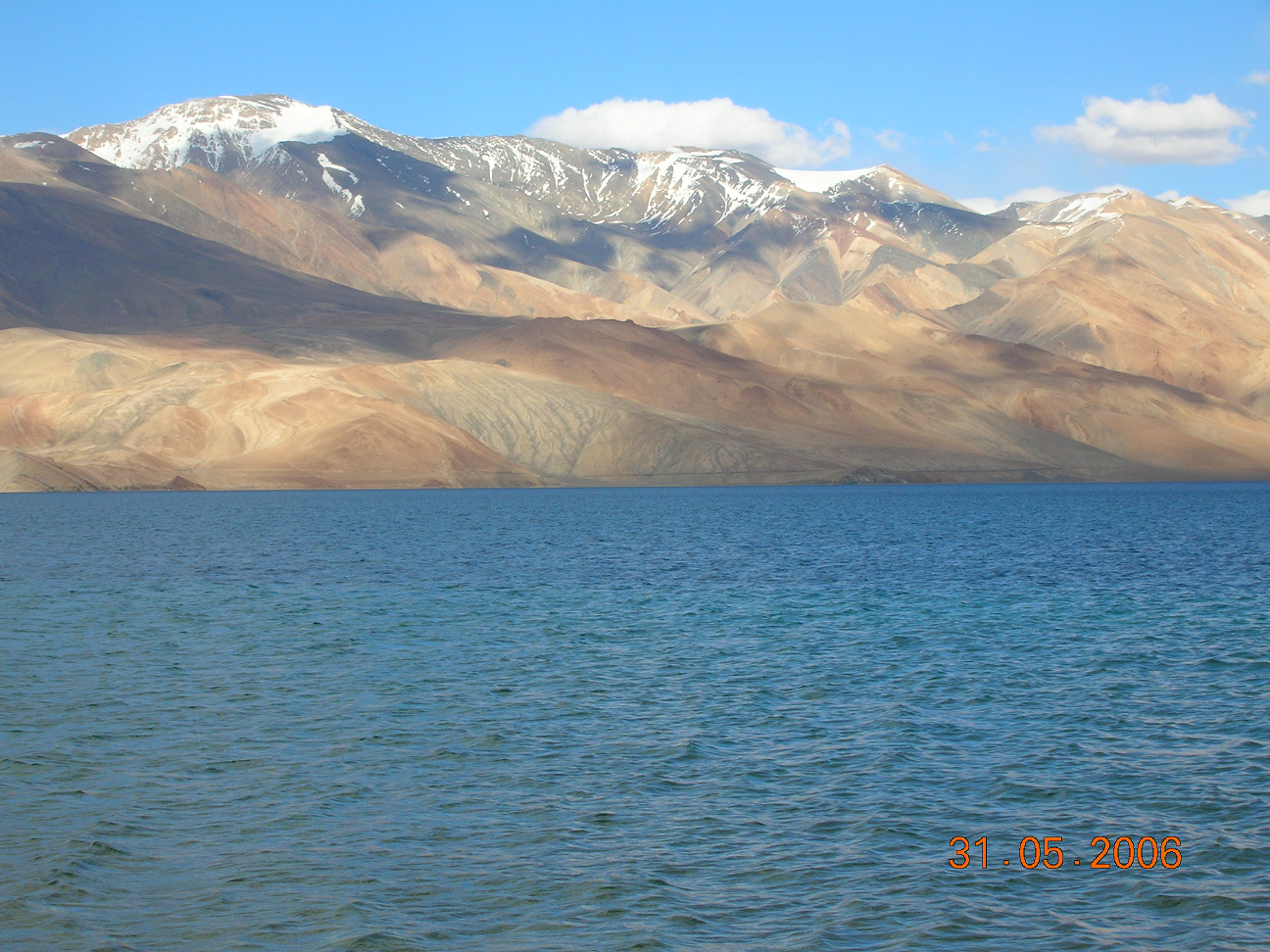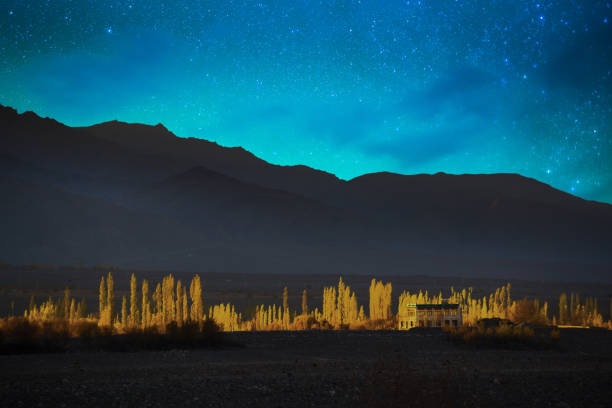- phone: 9419178029, 9906991272
- mail: tsomori@yahoo.com
ABOUT LADAKH
Ladakh ( Hindi: लद्दाख़, Urdu: لدّاخ; )
a word which means "land of high passes", is a region in the state of Jammu and
Kashmir of Northern India sandwiched between the Karakoram mountain range to the
north and the Himalayas to the south.
It is one of the most sparsely populated regions in India. Historically, the region
included the Indus Valley, the remote Zanskar to the south, and Nubra valleys to the
north over Khardung La in the Ladakh mountain range. Ladakh borders Tibet to the
east, the Lahul and Spiti to the south, Kashmir to the west, and Central Asia to the
north.
Ladakh is renowned for its remote mountain beauty and Buddhist culture which was
established as early as the 2nd century. This has given rise to the appellation "Little
Tibet", as it has strongly been influenced by the culture of Tibet.
People, Religion & Culture

The inhabitants of Ladakh are distinct from other parts of India. The faces and physique of Ladakhis, and the clothes they wear are more akin to those of Tibet and central Asia. In eastern and central Ladakh, today's population seems to be mostly of Tibetan origin. Further west, in and around Kargil, there is much in the people's appearance that suggests a mixed origin. The Ladakhi people are a hospitable, smiling, hardy lot, friendly and open.
Buddhism reached Tibet from India via Ladakh, and there are ancient Buddhist rock engravings all over the region, even in areas like Drass and the lower Suru Valley which today are inhabited by an exclusively Muslim population.
Islam came from the west. A peaceful penetration, its success was guaranteed by the early conversion of the sub-rulers of Dras, Kargil and the Suru Valley.
Of the secular culture, the most important element is the rich oral literature of songs and poems for every occasion, as well as local versions of the Kesar Saga, the Tibetan national epic. This literature is common to both Muslims & Buddhists. Among the many social and cultural events of Ladakh, the annual festivals held in the Buddhist monasteries constitute the most important part of the regions living heritage. The architecture of Ladakh contains Tibetan and Indian influences, and reflects a deeply Buddhist approach. The Buddhist wheel, along with two dragons, is a common feature on every Gompa. The Chörten have four-sided walls in Ladakh, as opposed to round walls in parts of Tibet. Many of the houses and monasteries are built on elevated, sunny sites facing the south, and are often made out a mixture of rocks, wood, cement and earth.
Customs & Traditions
The ladakhis are predominantly an
agricultural people. This, and the religion they practice, Buddhism, has deeply impacted their customs and traditions. Their family and social organizations reflect the values of a people dependent on the land and scarce land at that for their sustenance and for all their resources. The practice of inheritance by primogeniture, 'fraternal polyandry' and the withdrawal of the older members of the family as soon as the eldest son is mature enough and ready to take on the family responsibilities, are all examples of the same. The custom of inheritance by primogeniture, in which the eldest son inherits the fathers property also ensures that the land is not carved up in ever decreasing portions, making it unprofitable to cultivate. The younger sons have to accept the suzerainty of the eldest if they continue to live with him. They also share the wife of the eldest brother so that the number of progeny is limited. Any brother who wishes to marry on his own must set up a separate establishment and he has no share in the ancestral property. Today these are only practiced in remote villages deep interior.
The ladakhis also have a very strong sense of community. Sowing and reaping for instance are community activities in which all members of a village will participate irrespective of whose field is being ploughed.
Ladakhi culture is similar to Tibetan culture. Ladakhi food has much in common with Tibetan food, the most prominent foods being Thukpa, noodle soup; and Tsumpa, known in Ladakhi as Ngampe, roasted barley flour, eatable without cooking it makes useful, if dull trekking food. A dish that is strictly Ladakhi is skyu, a heavy pasta dish with root vegetables. As Ladakh moves toward a less sustainable, cash based economy, foods from the plains of India are becoming more common.
Like in other parts of Central Asia, tea in Ladakh is traditionally made with strong black tea, butter, and salt, it is mixed in a large churn and known as gurgur cha, due to the sound of mixing it. Sweet tea (cha ngarmo) is common now, made Indian style with milk and sugar. Chang, an alcoholic beverage, is made from barley, and has a yeasty taste slightly similar to sake.

Geography of Ladakh
Ladakh is India's highest plateau (much of it being over 3,000 m), spanning the Himalayan and Karakoram mountain ranges and the upper Indus River valley. Historic Ladakh consists of a number of distinct areas, including the fairly populous main Indus valley, the more remote Zanskar (in the south) and Nubra valleys (to the north over Khardung La ), the almost deserted Aksai Chin (under Chinese rule) and Kargil and Suru Valley areas in the west (Kargil being the second most important town in Ladakh). Before partition, Baltistan (now under Pakistani rule) was one of the districts of Ladakh. Skardu was the winter capital of Ladakh while Leh was the summer capital.
The mountain ranges in this region were formed over a period of 45 million years by the folding of the Indian plate into the stationary landmass of Asia. The drift continues and causing frequent earthquakes in the Himalayan region.. The peaks in the Ladakh range are at a medium altitude close to the Zoji-la (5,000-5,500 metres, 16,000 - 18,050 ft), and increase towards south-east, reaching a climax in the twin summits of Nun-Kun (7000 m, 23,000 ft).
Kargil & Zanskar

The western parts of Ladakh comprising several river valleys, drained and formed by the Himalayan tributaries of the high Indus, constitutes Kargil district. The Suru and Zanskar valleys form a great trough enclosed by the Himalayas and the Zanskar range. One of the most beautiful regions of Ladakh, SURU VALLEY is the heart land of Kargil district. Nestling along the northern foothills of the GREAT HIMALAYAn wall, it extends from Kargil southwards to Rangdum. The drive into Suru valley takes one through picturesque sprawling villages and monasteries like SANKU, KARTSE, PANIKAR, PARKACHIK & RANGDUM.
Rangdum is the last inhabited region in the Suru valley. From Rangdum the valley rises to 4,400 metres (14,436 ft) at Pensi-la, the gateway into Zanskar. Kargil, the only town in the Suru valley, was an important staging post on the routes of the trade caravans before 1947, being more or less equidistant, at about 230 kilometres from Srinagar, Leh, Skardu, and Padum. The geographical isolation and the esoteric nature of Buddhism practiced in ZANSKAR has enabled its inhabitants to preserve their identity, so that Zanskar is the least interfered with microcosm of Leh. Though the population of Muslims & Buddhists is almost same, there are several villages with famous old monasteries at PADUM, SANI, KARSHA, STONG-DE, ZANGLA, MUNE, PHUCKTAL etc.
CHANGTHANG

The descendents of Tibetan nomads known as CHANG-PAS, inhabit this part of Ladakh. These people continue to live a nomadic life by wandering along with their livestock. These people normally trade in Pashmina, meat, wool, butter, cheese etc. The Chang-pas live in Yak hair tents which they erect wherever they camp and these tents are know as REBO.
The main attraction of this area is PANGONG, TSOMORIRI & TSOKAR lakes. Pangong, Tsomoriri and Tsokar all have extremely fragile ecosystems and provide habitants some fragile species of birds.
PANGONG lake located at an altitude of around 4200m is a over 140kms. in length and 7kms. at its widest point. SPANGMIK is the furthest point to which the tourists are permitted. It's around 7kms. along the southern shore from the head from the head of the lake. The lake has no outlet so the water has high salt and mineral content. Because of this the lake cannot support aquatic life, hence it is distinctive.
It affords a spectacular view of the mountains of the CHANGCHENMO range to the north. Spangmik and a scattering of other small villages along the lake's southern shore are the summer homes of a scanty population of Chang-pa, the nomadic herds people of Tibet and south-east Ladakh. The Pangong Chang-pa cultivate sparse crops of barley and peas in summer. It's in winter that they unfold their REBO (tents) and take their flocks of sheep and Pashmina goats out to distant pastures.
TSOMORIRI & TSOKAR lakes are to the south-east of Leh in Rupshu valley. The true beauty of the region lies in its vast untamed space, wildlife & nomadic inhabitants.
Brackish Tsomoriri lake is surrounded by snow-topped barren mountains. This unique habitant attracts many migratory water birds including brahminy ducks and black-neck cranes and the rare barheaded geese.
Tsokar is a salt lake surrounded by white heaps of saline deposits in a vast dusty bowl surrounded by barren mountains. There is a freshwater lake to the south-east of Tsokar called STARTSAPUK Tso and herds of Kiang (Tibetan wild ass) often graze on the plain nearby.
KORZOK, situated at an altitude of around 4500m with its dozen or so houses and its Gompa appearing like a mirage among the barren hills, is the only permanent settlement in Rupshu. Otherwise the region is inhabited only by nomadic Chang-pa herds people. The few barley fields at Korzok must be among the highest cultivation in the world.
NUBRA VALLEY

South of Leh and snuggling between the Karakoram and the Ladakh ranges lies Nubra, comprising the Shayok valley and the valley of the Nubra river. The two rivers between them manage to keep the region green with dense seabuckthorn growing in abundance on the slopes.
Nubra, which means 'green' is the lowest of all the valleys in Ladakh, varying between 3048m at Hundar and 3231m at Panamik. You reach Nubra crossing over KHARDONGLA pass 5600m, considered to be the highest motorable pass of the world. Nubra has a number of large settlements besides DISKIT, which is the largest and has a sixteenth century monastery and numerous apricot orchards. HUNDAR is a nice small village around sand dunes and has a small population of Bactrian camels, shaggy double-humped animals. These animals were used as pack animals during the trade days with Central Asia. The villages of TIRIT, SUMUR, PANAMIK proceeds up Nubra river. SAMSTALING monastery is a famous one situated on the mountain side just above Sumur.
FLORA and FAUNA
The wildlife of this region was first studied by Ferdinand Stoliczka, an Austrian / Czech palaeontologist, who carried out a massive expedition in the region in the 1870s. There are hardly any trees and vegetation in sight in much of Ladakh, except for the few narrow valleys, where wild roses, willow groves and some herbs could be seen. However, above that, due to the rapid decrease in temperature, vegetation becomes stunted and sparse. The fauna of Ladakh have much in common with that of Central Asia generally, and especially those of the Tibetan Plateau. An exception to this are the birds, many of which migrate from the warmer parts of India to spend the summer in Ladakh. For such an arid area, Ladakh has a great diversity of birds — a total of 225 species have been recorded.
Many species of finches, robins, redstarts (like the Black Redstart) and the Hoopoe are common in summer. The Brown-headed Gull is seen in summer on the river Indus, and on some lakes of the Changthang. Resident water-birds include the Brahminy duck also known as the Ruddy Sheldrake and the Bar-headed Goose. The Black-necked Crane (Ladakhi: Thung Thung) is a rare species found scattered in the Tibetan plateau is also found in parts of Ladakh. Other birds include the Raven, Red-billed Chough, Tibetan Snowcock and Chukar. The Lammergeier and the Golden Eagle are common raptors here.

The endangered Ibex found in high craggy terrain, numbers several thousand in Ladakh often spotted by trekkers. The Bharal, or blue sheep, is even more common, ranging in the Himalayas from Ladakh east as far as Sikkim. The Shapu is a rare goat that numbers about a thousand. Found at lower elevations, mostly in river valleys, they compete with domesticated animals. The Argali, or Nayan, is a relative of the Marco Polo sheep of the Pamirs. They are impressive animals with huge horizontal curving horns, numbering only a couple hundred in Ladakh, but found in a wide range through out mountainous areas of the Chinese Provinces of Xinjiang, Qinghai, and Gansu.
The Chiru, or Tibetan antelope, (known in Ladakhi as Stos) is also endangered. It has traditionally been hunted for its wool. The wool obtained from the Chiru is called Shahtoosh, which is valued in South Asia for its light weight and warmth and as a status symbol. Owning or trading in Shahtoosh is now illegal in most countries. The Kyang, or Tibetan Wild Ass, is common in the grasslands of Changthang, numbering about 1,500 individuals.
The Snow Leopard (Ladakhi: Shan) once ranged throughout the Himalayas, Tibet, and as far as the Sayan mountains on the Mongolian-Russian border; and in elevation from 1800 m to 5400 m. It is believed there are about 200 in Ladakh, especially in the Hemis High Altitude National Park. Other cats in Ladakh are even rarer than the snow leopard, the Lynx, numbering only a few individuals, and the Pallas's cat, which looks like a house cat. The Tibetan Wolf preys on the livestock of the Ladakhis and as such is the most persecuted, reduced to just about 300 animals. There are also a few brown bears in the Suru valley and the area around Dras. The Tibetan Sand Fox has recently been discovered in this region. Among smaller animals, Marmots, voles, hares, and several types of Pika are common.
